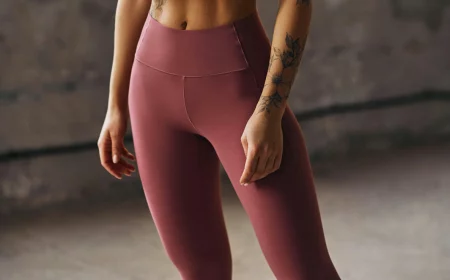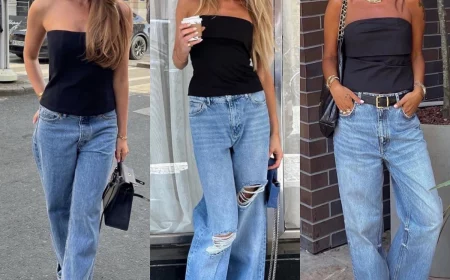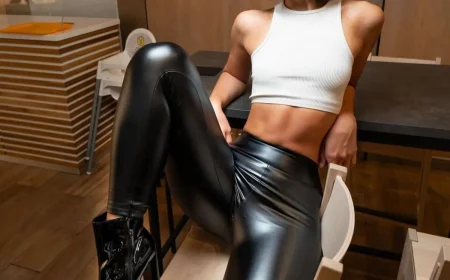The Real Reason Your Clothes Fall Apart (And How to Make Them Last)
I’ve spent the better part of my life with clothes. Not just selling them, but really getting to know them—taking them apart, stitching them back together, and figuring out what makes one t-shirt last a decade while another becomes a rag after two washes. It all started in a small tailor shop where the old master taught me to judge a garment by its seams and the feel of the fabric, not the fancy label stitched inside.
In this article
It’s funny, the question I get most often isn’t about what’s in style. People bring me a favorite coat or a perfectly worn-in shirt and ask, “How can I make this last forever?”
The secret isn’t in some special laundry detergent. It starts with actually understanding what’s in your closet. Every piece of clothing is built on fabric, and each type has its own personality, its own quirks. Knowing the difference between a plant fiber and an animal fiber is genuinely more useful than chasing the latest trend. This is the bedrock of a wardrobe that you’ll love for years. It helps you buy smarter, care for things properly, and save pieces you might have thought were goners.

Getting to Know Your Fabrics
Okay, let’s get into it. Almost everything in your closet falls into a few main families. You’ve got natural fibers from plants and animals, and then you have synthetics, which are basically science projects. There’s also a cool in-between category called regenerated fibers. Knowing which is which is step one to not accidentally ruining something you love.
Plant-Based Fibers: The Cool, Breathable Crew
Think cotton and linen. These come from the ground, and their core structure (cellulose) absolutely loves water. That’s why your cotton towels are so thirsty. It also means they’re surprisingly strong when they’re wet, so you don’t have to be too delicate with them in the wash. The downside? That love of water is what makes them wrinkle. The fibers swell up when wet and then don’t lie perfectly flat when they dry. It’s just their nature.
Linen is a perfect example. A good linen shirt feels cool against your skin because it’s a master at wicking moisture away. But honestly, it has almost zero stretch. You can look at a linen garment and it will wrinkle. That’s not a flaw, it’s just part of the deal. You learn to embrace it.
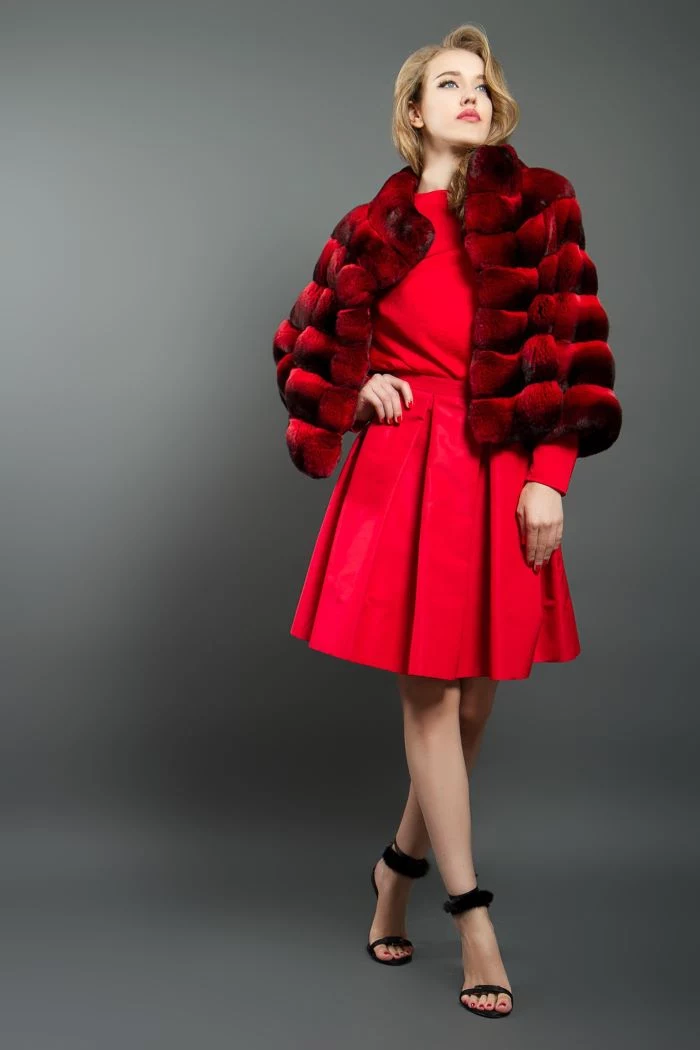
Animal-Based Fibers: The Warm, Resilient Bunch
Here we’re talking about wool, cashmere, silk—things made of protein, a lot like our own hair. This protein structure is why they’re amazing insulators. The natural crimp in wool fibers traps air, creating a cozy barrier against the cold. They’re also incredibly resilient; you can bend a wool fiber over and over before it breaks, which is why wool sweaters resist wrinkling so well.
But they have a major weakness: heat and high pH. High heat will literally cook the proteins, causing them to shrink and lock together permanently. I once had a client bring in a gorgeous wool sweater they’d thrown in a hot dryer. It had shrunk to the size of a doll’s outfit, completely felted and irreversible. It was a tough lesson. Similarly, harsh, alkaline detergents mess with the protein. You wouldn’t wash your hair with cheap dish soap, right? Same principle.

Quick tip: If you’ve slightly shrunken a wool sweater, don’t give up hope just yet. You can try soaking it in a sink of lukewarm water with a generous squirt of hair conditioner. Let it sit for about 30 minutes. The conditioner can help relax the fibers enough for you to gently stretch it back into shape while it’s damp. No guarantees, but it’s saved a few of my favorites!
Synthetic Fibers: The Tough Workhorses
Polyester, nylon, and acrylic are the big names here. They’re essentially plastics spun into thread. Their superpower is durability. They stand up to abrasion, wrinkles, and most chemicals. They also hate water (the pros call this hydrophobic), which is why a polyester workout shirt dries in a flash. But that’s also why it can feel clammy and gross in hot weather—it doesn’t breathe and let sweat evaporate like cotton does.
The biggest issue I see with synthetics is that they love oil (oleophilic). This makes oil-based stains a nightmare to get out and is the reason they can start to hold onto body odor over time. Another heads up: they have a low melting point. A hot iron will melt a hole in a polyester shirt in a split second, leaving a shiny, hard patch that you can’t fix.

Regenerated Fibers & Blends: The Best of Both Worlds?
Fibers like rayon, modal, and Tencel are hybrids. They start as natural wood pulp but go through a heavy chemical process to become fabric. They often have a beautiful, silky drape and feel amazing. But classic rayon has a secret weakness: it loses about half its strength when it gets wet. I’ve seen people literally tear a rayon dress just by wringing it out. Newer versions like modal and Tencel are much better, but they still need a gentle touch during washing.
And let’s be real, most of your clothes are probably blends. You’ll see tags like “60% Cotton, 40% Polyester” or “80% Wool, 20% Nylon.” So, what do you do? The rule of thumb is to care for the garment based on its most delicate fiber. For a cotton/poly blend, you can treat it pretty much like cotton. But for a wool/nylon blend, you absolutely follow the rules for wool—cold water, gentle cycle, and a pH-neutral soap.
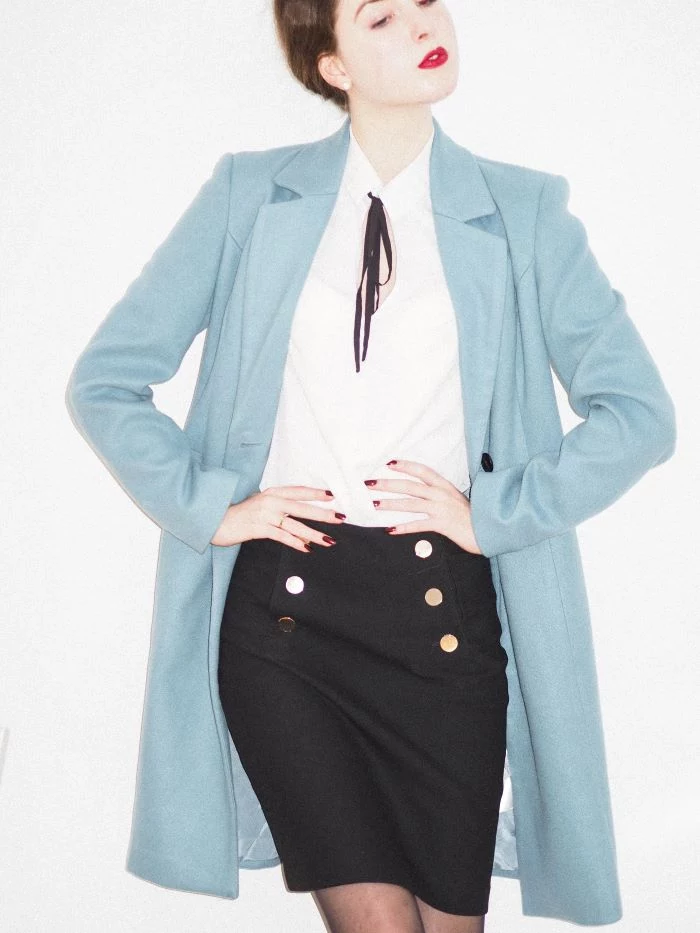
How Your Clothes Are Actually Built
Once you get the fabric, the next thing to check is the construction. This is what separates a $300 jacket from a $30 one that looks similar on the hanger. It’s all in the details.
The Secret Life of a Jacket
A well-made blazer is a small piece of engineering. In higher-quality jackets, the chest and shoulders are structured with a canvassed construction. This means a layer of canvas (often made of horsehair and wool) is sewn between the outer fabric and the lining. It’s designed to be flexible and, over time, it actually molds to your body for a custom-feeling fit. It gives the lapel a beautiful, soft roll.
Most jackets you buy off the rack today use a fused construction, where a stiff interlining is basically glued to the fabric with heat. It’s way cheaper and faster. But it creates a flatter, stiffer look, and that glue can break down over time, especially after a few trips to the dry cleaner. You ever see those weird bubbles on the lapel of an old blazer? That’s the glue failing. It’s a dead giveaway of a cheaper make.

Here’s a trick for when you’re shopping: Pinch the chest fabric of a jacket, just below the button. Try to separate the layers with your thumb and forefinger. If you can feel three distinct layers—the outer fabric, a freely moving middle layer (the canvas), and the inner lining—it’s likely canvassed. If you can only feel two stiff layers that seem stuck together, it’s fused.
Let’s Talk About Seams
The seams are the skeleton of your clothes. I can tell a ton about quality just by looking at the stitching. Check the stitch density, or stitches per inch (SPI). A quality dress shirt should have at least 10-12 SPI. A cheaper one might only have 6-8. More stitches mean a stronger seam that’s less likely to pucker or pop.
Okay, time for a little challenge. Go grab your favorite shirt and your oldest pair of jeans. Check the tags—what are they made of? Now, look at the main seam running down the inside leg of the jeans. See that super tough, folded-over seam where you can’t see any raw fabric edges? That’s a flat-felled seam, and it’s built to last. On delicate silk blouses, you might find a French seam, which is a tiny, tidy seam that encloses all the raw edges. Seeing that is a sign of true craftsmanship, because it takes time and skill.

Your Home Laundry, But Make It Professional
You don’t need a bunch of expensive gear to care for your clothes well. It’s more about technique. Honestly, the two biggest culprits behind ruined clothes are too much heat and the wrong soap.
My Recommended Garment Care Starter Kit
Before we get into washing, let’s talk tools. Having a few key things on hand makes a world of difference. You don’t need to spend a fortune, either. Here’s what I always have:
First, a pH-neutral detergent. This is non-negotiable for wool and silk. A bottle of something like Woolite Delicates or a specialty wool wash will only set you back about $5 to $10 and will save your sweaters. For everything else, a gentle, eco-friendly detergent is usually a great choice. You’ll also want a mesh laundry bag (or two). These are perfect for protecting delicate items or things with straps from getting snagged in the machine. They’re super cheap, usually under $10 for a multi-pack at places like Target or online. Finally, for storage, grab some cedar blocks or lavender sachets. They’re a natural, pleasant-smelling way to keep moths away from your woolens and cost around $10-$15 for a decent set.
The Washing and Drying Game Plan
Those little symbols on the care tag are your best friend. Learn them! A tub with one dot means cold wash (around 86°F), two dots means warm, and so on. A line underneath means use a gentle cycle.
My advice? Use cold water for almost everything. It’s better for your clothes (less shrinking and fading) and your energy bill. The only time I use warm water is for things like bed sheets and towels that need a bit more cleaning power.
And the dryer… oh, the dryer. It is the single most destructive appliance for your clothes. The combination of high heat and tumbling is brutal. I air-dry almost everything. If you must use a dryer, use the lowest heat setting. Sweaters should always be laid flat on a towel or a mesh rack to dry. If you hang them, the weight of the water will stretch them out of shape for good. Woven shirts and pants can be hung on hangers—button the top button and shape the collar to save yourself from ironing later.
Heads up! A lot of people hang clothes in direct sun, thinking it helps them dry faster. It does, but the sun’s UV rays are also a powerful bleach that will fade colors and weaken fibers over time, especially silk.
A Pro’s Guide to Stain Removal
When you get a stain, act fast. The longer it sits, the more it bonds to the fabric. Here’s how to tackle the most common types:
-
For Plant Stains (Coffee, Wine, Tea, Juice): These are tannin stains. Don’t just pour vinegar on them! Here’s the right way: mix a solution of about one part white vinegar to three parts cool water. Use a clean cloth to blot the solution onto the stain. Work from the outside in to keep it from spreading. Never rub aggressively.
-
For Oil-Based Stains (Grease, Salad Dressing, Makeup): Water won’t work here. You need something to break down the oil. Your first move should be to sprinkle a little cornstarch or baking soda on the fresh stain to absorb the excess oil. Let it sit for 30 minutes, then scrape it off. Then, pre-treat the spot with a tiny drop of dish soap (since it’s made to cut grease) before laundering as usual.
-
For Protein Stains (Blood, Sweat, Dairy): The number one rule here is COLD WATER ONLY. Hot water will cook the protein and set the stain forever. An enzyme-based stain remover is your best weapon here. Just follow the directions on the bottle.
And here’s a serious PSA: Never, ever mix cleaning products, especially chlorine bleach and ammonia. The combination creates a highly toxic gas. I had a client do this once trying to get a stain out, and they made their laundry room a genuine hazard zone. It’s not worth the risk.
When to Call in a Professional
Look, knowing your own limits is smart. Some jobs are just better left to the pros. My rule is simple: if the item is expensive, irreplaceable, or has deep sentimental value, don’t take the risk.
Complex alterations, for example. You can learn to sew on a button, but shortening the sleeves on a fully lined jacket is a major operation. It involves taking apart the sleeve, the lining, and putting it all back together perfectly. That’s a job for a skilled tailor.
The same goes for cleaning certain materials like suede, leather, fur, or heavily beaded garments. They require special solvents and equipment to clean without destroying them. If you’re not sure, it’s always better to take it to a reputable dry cleaner. Look for one that’s been around for a while and has good reviews; a good cleaner will be happy to explain their process for delicate items. Some are even affiliated with professional organizations that require ongoing education to maintain quality standards.
Building a wardrobe you love is a joy. But learning to care for it is a craft. It turns you from just a consumer into a custodian of your own style. Start small. Pick one piece you truly value, learn its story, and care for it with intention. The satisfaction you’ll get from making it last is so much better than the fleeting thrill of buying something new.
Inspirational Gallery
- Zip all zippers and fasten hooks to prevent them from snagging other items.
- Turn dark-wash jeans and graphic t-shirts inside out to protect their color and print.
- Avoid overloading the machine; clothes need room to move to get truly clean.
One of the biggest laundry myths: more detergent equals cleaner clothes. In reality, excess soap leaves a residue that stiffens fabric, dulls colors, and can even trap dirt. Always use the recommended amount, or even slightly less, especially with high-efficiency machines.
Washing a single fleece jacket can release hundreds of thousands of microscopic plastic fibers into the water system.
This is a major source of microplastic pollution. To mitigate this, wash synthetic items like fleece and athletic wear less often. When you do, consider using a filtering wash bag like a Guppyfriend, which is designed to capture these fibers before they go down the drain.
Those annoying little fluff balls on your favorite sweater?
That’s called “pilling,” and it happens when short or broken fibers on the surface of the fabric tangle together. It’s common on knits like wool, cashmere, and acrylic blends. While friction is the cause, the solution is simple removal. A high-quality fabric shaver, like one from Philips or Gleener, can safely shear them off without harming the fabric, instantly making a garment look new again.
Machine Drying: Fast and convenient, but the high heat is a primary culprit for fiber damage, shrinkage, and fading. It’s especially harsh on elastics and delicate synthetics.
Air Drying: Gentler on fabrics, saves energy, and helps preserve the fit and color of your clothes. Use a flat rack for heavy knits to prevent stretching.
Our advice? Air dry whenever you can; your clothes will thank you for it.
- It prevents the colors in your dark and vibrant garments from fading.
- It uses significantly less energy, which is better for the planet and your utility bill.
- It’s far gentler on delicate fibers, preventing shrinkage and damage.
The simple secret to these benefits? Washing your clothes in cold water. Modern detergents, like those from The Laundress or Persil, are formulated to work just as effectively at lower temperatures.
Spotted a snag in your favorite knit sweater? Don’t cut it, as that will create a hole. Instead, gently stretch the fabric around the snag to help pull the loop back in. If it’s still visible, use a crochet hook or a simple bobby pin to pull the snagged loop through to the inside of the garment where it won’t be seen.
According to the Ellen MacArthur Foundation, the equivalent of one garbage truck of textiles is landfilled or burned every second. Making what we already own last longer is one of the most sustainable actions we can take.
Don’t fear the signs of a well-loved garment. The soft fading on the seams of your denim jacket or the subtle wear on a linen shirt aren’t flaws; they are a patina. It’s the story of the garment’s life with you. This embrace of imperfection is a core part of the Japanese aesthetic of wabi-sabi—finding beauty in things that are real and lived-in.


